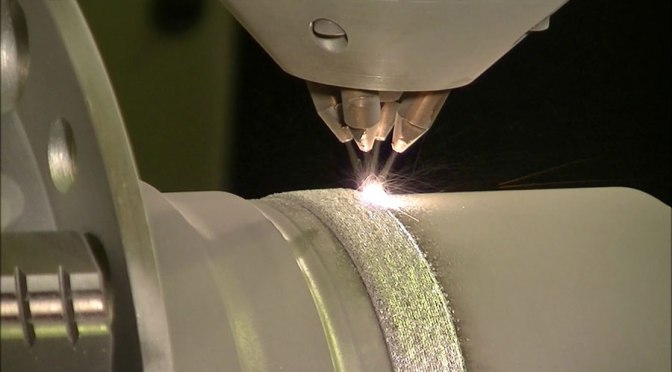Following the recent feasibility study competition, the 3DP-RDM network is funding four projects in 2015. In this series of blog posts we introduce the four studies. Today we introduce the second study, “The enabling role of 3DP in redistributed manufacturing: A total cost model”, which is being led by Dr Martin Baumers at the University of Nottingham.
The diffusion of 3D Printing (3DP) is creating an environment in which manufacturing innovation is flourishing. While the technical feasibility of redistributed manufacturing through 3DP has been demonstrated across many industry sectors, its economic foundations are not fully understood. At present, manufacturing supply chains are based on the logic of sourcing components from external suppliers, which often are globally distributed. 3DP offers the ability to bring both the manufacturing operation, as well as the component supply chain, close to the point of consumption.
The ability to regain, or reshore, manufacturing through 3DP, however, depends on a favourable business case. At present key variables underpinning this business case are not fully measured and understood. This project sets out to develop a total cost model for 3DP manufacturing operations, as a fundamental precursor to defining viable businesses cases for redistributed, as well as novel, manufacturing applications.
To date costing approaches of 3DP have largely focused on investments (i.e. capital expenditure) and consumables (i.e. materials). Analyses of these “well-structured costs” have observed that fully utilising the available machine capacity forms a prerequisite for efficient operations. This principle is shared with traditional manufacturing, which exhibits significant economies of scale, and as a result, global supply chains.
This stands in contrast to 3DP where the underlying reason for the different requirements towards full utilisation is that 3DP is inherently parallel. Moreover, existing analyses of 3DP resource consumption have largely ignored hidden or so-called “ill-structured” costs relating to build failure and ancillary manual processes, such as part finishing and support removal, and, perhaps most importantly, cost relating to or unintended product variation. This omission has come at the expense of industrial applicability, also leading to a lack of realistic decision tools for the support of 3DP technology adoption, which are an essential prerequisite for adoption and successful diffusion. This project therefore proposes to conduct a series of experiments to establish the empirical parameters needed to develop a realistic and comprehensive costing model fundamental to redistributed 3DP.
This feasibility study aims to reconcile two clusters of research questions of particular interest for the diffusion of 3DP in redistributed manufacturing settings. Firstly, it is necessary to establish an understanding of 3DP as a parallel digitally integrated manufacturing technology capable of operating in a redistributed setting. Improved cost models will describe configurations minimising overall monetary cost, energy consumption, and in many cases also waste caused by unintended variation. Secondly, unlike conventional manufacturing, the parallel and digital design-driven nature of 3DP also gives rise to network effects in 3DP. Network externalities can improve the value, or benefit, of an individual process as the installed base of such platforms increases. Both clusters are vital to understanding the viability of platform-type 3DP operations in redistributed settings.
This study will be conducted by three partners: the Additive Manufacturing and 3D Printing Group at the University of Nottingham, the Saïd Business School at the University of Oxford, and Digits2Widgets.
The project is led by Dr Martin Baumers, Research Fellow at the 3D Printing Research Group within the Faculty of Engineering at the University of Nottingham. His research interests are the financial cost and energy consumption of various additive processes as well as the benefits that can be derived from adopting Additive Manufacturing. Martin concentrates on the development of novel approaches to production costing, process energy consumption modelling, automated build volume packing and product complexity measurement. In 2012, he completed a PhD on the economics of additive manufacturing. Since then, he has written a number of academic papers and media articles on the topic and has contributed to additive manufacturing projects in aerospace, automotive and the medical sector as a researcher. He was awarded the Best Research Paper Award at the Sustainable Design & Manufacturing Conference in 2014 for his paper “Is there a relationship between product shape complexity and process energy consumption in Additive Manufacturing?” This feasibility study is his first as a principal investigator.




